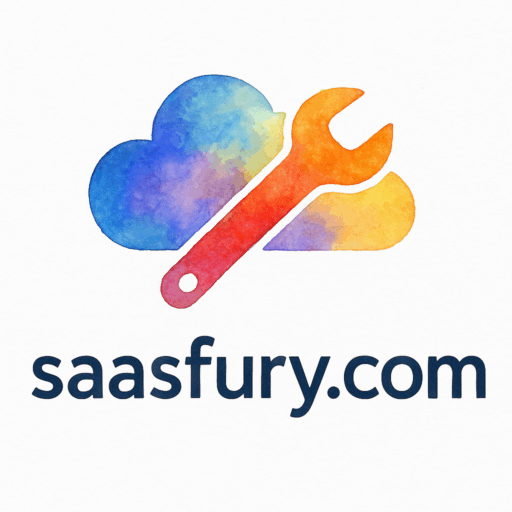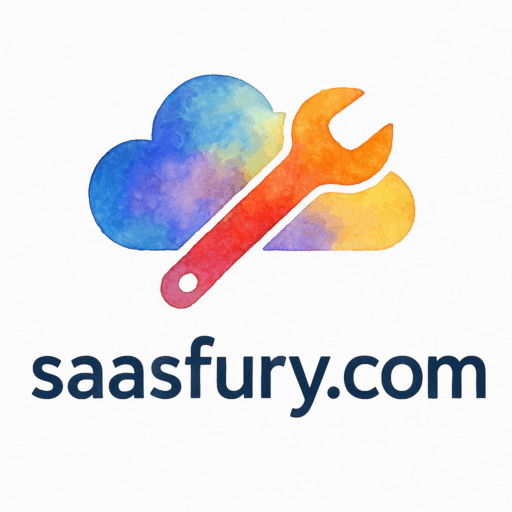Introduction to SaaS Tools for E-commerce
Running an e-commerce business is exciting but comes with plenty of moving parts: inventory, marketing, customer service, accounting, shipping—the list feels endless. That’s where SaaS (Software as a Service) tools step in. Instead of juggling endless spreadsheets or outdated software, you get modern cloud-based solutions that streamline operations.
In this guide, we’ll dive deep into 7 SaaS tool recommendations for e-commerce store owners, showing you how to save time, boost sales, and keep your customers happy. We’ll also sprinkle in helpful resources from industries like creative education, retail e-commerce, and professional services that highlight just how flexible SaaS can be across different business types.
Why SaaS Tools are a Game-Changer for Online Stores
If you’ve ever felt overwhelmed by the daily grind of running an online store, you’re not alone. SaaS tools make life easier by bringing automation, insights, and integrations into one neat package.
The Flexibility of Cloud-Based Solutions
Whether you’re managing orders from your café, checking analytics during a trip, or launching a campaign at midnight, SaaS tools give you the freedom to work from anywhere. This flexibility is especially powerful in industries like hospitality and food service, where staff often need mobile access.

Cost-Effectiveness Compared to Traditional Software
Unlike clunky legacy systems that demand big upfront costs, SaaS tools operate on subscriptions. You only pay for what you need, making them ideal for small businesses and growing startups.
Scalability for Growing Businesses
Adding a new sales channel? Scaling from 100 to 10,000 monthly orders? SaaS tools grow with you. Many solutions, from retail software to healthcare tools, are built to expand as your business does.
Key Features to Look for in SaaS Tools
Choosing the right SaaS solution isn’t just about popularity—it’s about compatibility.
Integration with E-commerce Platforms
The best SaaS tools integrate seamlessly with Shopify, WooCommerce, or BigCommerce, reducing headaches and saving hours.
Automation and Efficiency
From auto-generating invoices to scheduling social posts, automation is the secret weapon of SaaS. Tools like scheduling apps make repetitive tasks a breeze.
Analytics and Customer Insights
Want to know why customers abandon carts? Or which campaigns bring the best ROI? SaaS analytics give you these answers.
7 SaaS Tool Recommendations for E-commerce Store Owners
Now, let’s break down the seven SaaS tools that every serious e-commerce entrepreneur should consider.
1. Shopify Apps for Store Optimization
Why Store Owners Love Shopify Apps
If your store runs on Shopify, you’ve got access to a goldmine of apps covering everything from SEO to loyalty programs.
Key Benefits and Use Cases
- Boost conversions with upsell apps
- Add chatbots for instant customer support
- Improve load speed with optimization tools
💡 Pro Tip: For inspiration, explore how industries like online education and graphic design leverage SaaS tools for customization.
2. Klaviyo for Email and SMS Marketing
Personalized Campaigns at Scale
Klaviyo helps you send smarter campaigns that feel personal. Imagine sending a “We miss you” text to a customer who hasn’t purchased in 60 days—that’s the magic of segmentation.
Data-Driven Customer Retention
Its dashboards let you track open rates, click-throughs, and revenue per campaign. This makes it easier to fine-tune strategies and retain customers long-term.
👉 Many marketing agencies recommend Klaviyo for its unmatched personalization features.
3. Gorgias for Customer Support
Omnichannel Customer Care
Customers don’t just email—they DM on Instagram, comment on Facebook, and send live chat pings. Gorgias consolidates all of that into one inbox.
Faster Response Times with Automation
By auto-responding to FAQs (like “Where’s my order?”), Gorgias helps reduce response time and increase satisfaction.
This approach aligns with the omnichannel trend that modern businesses are adopting.
4. SEMrush for SEO and Marketing Insights
Keyword Tracking and Competitor Analysis
SEMrush gives you a bird’s-eye view of how your competitors are ranking. It’s like spying—ethically—on their playbook.
Enhancing Content Strategies
Optimize product descriptions, category pages, and blogs with the right keywords. For example, if you’re in retail, SEMrush helps you find high-converting keywords.
5. ShipStation for Order Fulfillment
Multi-Carrier Shipping Options
Customers love choices, and ShipStation integrates with USPS, UPS, FedEx, and more.
Streamlined Logistics Management
From printing labels to processing returns, it centralizes shipping so you spend less time firefighting logistics.
This is particularly handy for restaurants and hospitality businesses offering delivery services.
6. QuickBooks Online for Accounting
Automating Financial Workflows
Forget manual bookkeeping. QuickBooks automatically syncs your sales and expenses.
Real-Time Financial Tracking
You can see at a glance whether you’re profitable this month or if you need to adjust. It’s a must-have for small businesses scaling up.
7. Hotjar for Customer Behavior Analysis
Heatmaps and Session Recordings
Hotjar shows how customers actually use your site—where they click, scroll, and drop off.
Optimizing User Experience (UX)
With these insights, you can redesign pages for better conversions. It’s like having a magnifying glass on your customer journey.
This mirrors strategies in consulting, where understanding user behavior drives results.
How to Choose the Right SaaS Tools for Your Store
- Define Your Business Goals: Do you want more sales, smoother logistics, or happier customers?
- Compare Pricing and Features: Look beyond cost—value matters more.
- Consider Scalability and Integrations: Tools should work well with each other and grow with your store.
Need inspiration? Browse through SaaS tool recommendations tailored for different industries.
Common Mistakes to Avoid When Using SaaS Tools
Overloading on Too Many Tools
Don’t fall into the trap of “shiny object syndrome.” Stick with essentials first.
Ignoring Staff Training and Onboarding
Even the best SaaS tool is useless if your team can’t use it properly.
Not Reviewing ROI Regularly
Check quarterly: Are your tools saving money, time, or boosting sales? If not, reconsider.
Future of SaaS Tools in E-commerce
AI and Predictive Analytics
SaaS platforms will increasingly use AI to predict customer behavior before it happens.
Increased Focus on Personalization
Shoppers expect experiences tailored just for them. Tools across industries like medical SaaS and patient records show how powerful personalization can be.
Expansion of Omnichannel Capabilities
Future SaaS tools will unify online and offline shopping into a single seamless journey.
Conclusion
E-commerce is competitive, but the right tools help you stay ahead. These 7 SaaS tool recommendations for e-commerce store owners aren’t just about efficiency—they’re about growth. Whether you’re streamlining shipping with ShipStation, boosting retention with Klaviyo, or analyzing behavior with Hotjar, SaaS makes it possible to run a smarter, leaner, more profitable store.
To explore more industry-focused tools, check out business tools and e-commerce insights for additional strategies.
FAQs
Q1: What’s the best SaaS tool for small e-commerce startups?
Start with Shopify apps and Klaviyo—they’re affordable and impactful.
Q2: Can SaaS tools integrate with WooCommerce or Magento?
Yes, many tools like ShipStation and SEMrush integrate with multiple platforms.
Q3: Do SaaS tools improve customer retention?
Absolutely. Tools like Klaviyo and Gorgias are designed to nurture relationships.
Q4: How do I know if a SaaS tool is worth it?
Measure ROI: Is it saving time, increasing sales, or improving customer experience?
Q5: Should I use free SaaS tools?
Free plans are fine for testing, but paid versions usually offer critical features.
Q6: Are SaaS tools secure for handling sensitive customer data?
Yes—just confirm compliance with standards like GDPR and PCI.
Q7: What’s next for SaaS in e-commerce?
Expect more AI-driven personalization, stronger omnichannel features, and deeper integrations.

